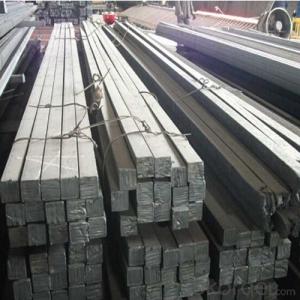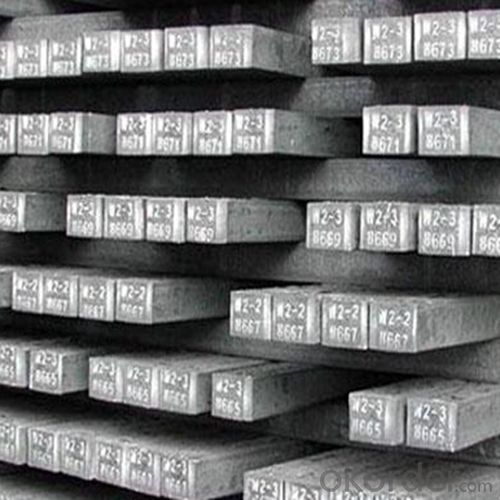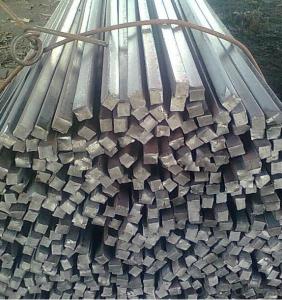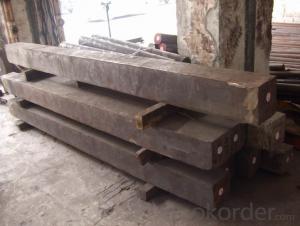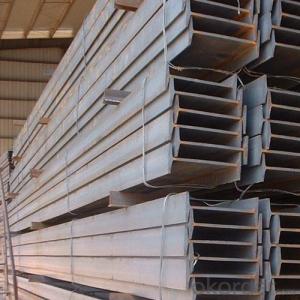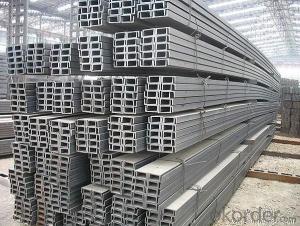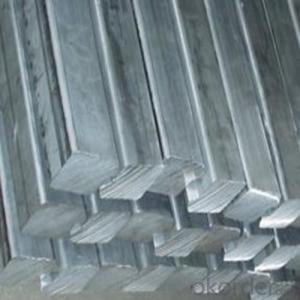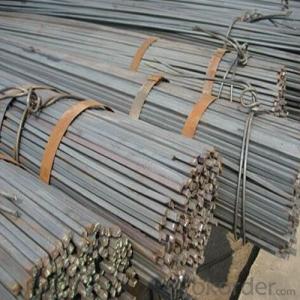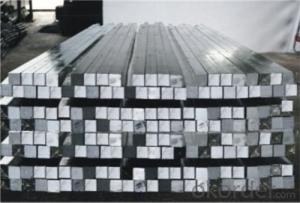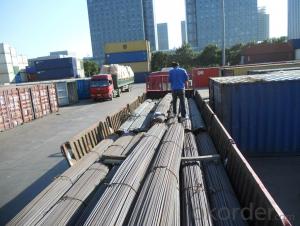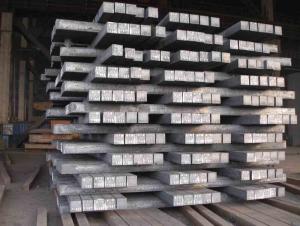Steel Square Bar Small Sizes with Length of 6 Meters
- Loading Port:
- Tianjin
- Payment Terms:
- TT or LC
- Min Order Qty:
- 25 m.t.
- Supply Capability:
- 10000 m.t./month
OKorder Service Pledge
OKorder Financial Service
You Might Also Like
1. Structure of Steel Square Bar Small Sizes description:
Steel square bar small sizes is a bar with square shaped cross-section. It is special case of equal sides. Before steel products are sold on the market, the steel must first be processed into more functional pieces. Raw steel cannot be of use while in its pure form, thus it has to be cast into shape. The freshly made steel, Steel square bar small sizes is still in the form of a metal bar or rectangle. Small sizes of Steel square bar small sizes are used in ship building.
2. Main Features of Steel Square Bar Small Sizes:
• Grade: Q235
• Type: Mild carbon steel
• A quadrilateral with four equal sides and four right angles.
• Vibration: The stiffness and mass are chosen to prevent unacceptable vibrations, particularly in settings sensitive to vibrations, such as offices and libraries.
• Local yield: Caused by concentrated loads, such as at the beam's point of support.
3. Steel Square Bar Small Sizes Images:
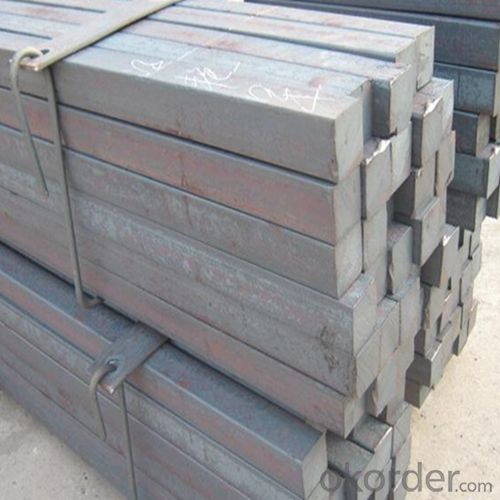
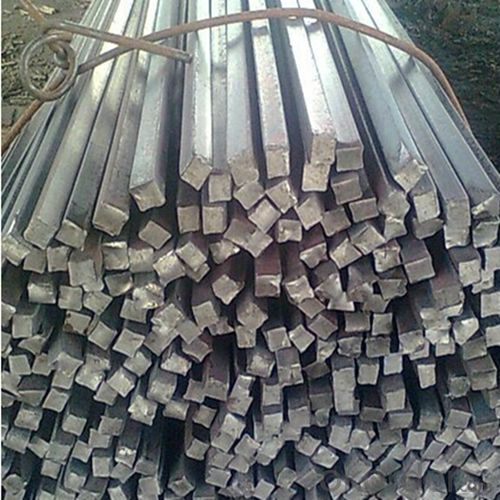
4. Steel Square Bar Small Sizes Specification:
Mechanical Properties | Grade | Steel diameter(mm) | |||
≤16 | 16~40 | 40~60 | 60~100 | ||
Yield Point Δs/MPa | Q195 | ≥195 | ≥185 | - | - |
Q235 | 235 | 225 | 215 | 205 | |
Tensile Strength | Q195 | 315~390 | |||
Q235 | 375~500 | ||||
Elongation δ5% | Q195 | ≥33 | ≥32 | - | - |
Q235 | 26 | 25 | 24 | 23 | |
5. FAQ
We have organized several common questions for our clients,may help you sincerely:
①What is the main material?
There are two types of Square Bar, one is hot rolled square bar and other one is cold drawn square bar. Our principal products is hot rolled square bar. We dedicate to products with material Q195 and Q235. We offer products with high quality and low price.
②How to inspect the quality?
We have a professional inspection group which belongs to our company. We resolutely put an end to unqualified products flowing into the market. At the same time, we will provide necessary follow-up service assurance.
③Is there any advantage about this kind of product?
Steel I beam bar IPE has a reduced capacity in the transverse direction, and is also inefficient in carrying torsion, for which hollow structural sections are often preferred.
- Q: Can a steel square be used for measuring the thickness of glass?
- Measuring the thickness of glass with a steel square is not possible. The purpose of a steel square is to measure angles and guarantee precise right angles in carpentry and woodworking tasks. It is not intended or appropriate for gauging the thickness of glass. For accurate measurements of glass thickness, specialized instruments like calipers or micrometers are commonly employed, providing precise results.
- Q: Can a steel square be used for plumbing and pipefitting?
- Certainly! A steel square, which is also referred to as a carpenter's square or a framing square, possesses the versatility required for plumbing and pipefitting tasks. This tool enables the measurement and marking of angles, the assessment of squareness, and the achievement of precise cuts and joints. In the realm of plumbing and pipefitting, a steel square serves the purpose of measuring and aligning pipes, executing meticulous cuts, and ensuring the appropriate angles and squareness in fittings and connections. Additionally, it proves valuable in establishing reference points and facilitating the proper installation of pipes and fixtures. Nevertheless, it is crucial to acknowledge that for more specialized plumbing and pipefitting endeavors, alternate tools specifically tailored for those tasks may prove more suitable and accurate.
- Q: How do you use a steel square to find the length of a line?
- To determine the length of a line using a steel square, follow these steps: 1. Align one side of the steel square perfectly with one end of the line. 2. Securely hold the square in place while extending the other side along the line. 3. If the line exceeds the square's length, gradually move the square along the line while maintaining alignment, until you reach the end. 4. Once the square aligns with the line's end, measure the distance from the aligned side to the extended side's end. 5. This measurement will provide the line's length. It is crucial to acknowledge that using a steel square may not yield the same level of accuracy as a measuring tape or ruler, especially for longer distances. Steel squares are primarily intended for measuring right angles and ensuring squareness. Therefore, for precise measurements, it is advisable to utilize a more accurate measuring tool.
- Q: How do you use a steel square to measure and mark irregular angles?
- In order to measure and mark irregular angles using a steel square, there are several steps to follow. Begin by positioning the steel square against the angle you wish to measure, ensuring that one edge of the square aligns with one side of the angle. Proceed by firmly holding the square in place to secure it against the angle. Once the square is secure, observe the markings on the body of the square. These markings typically display degrees or angles, allowing for precise angle measurement. Align the appropriate marking on the square with the other side of the angle and take note of the measurement. To mark the irregular angle, a pencil or scribe tool can be utilized. Align the square with the angle, aligning the desired measurement with the other side of the angle. With the square in position, use the pencil or scribe tool to mark the angle on the material being worked on. It is important to maintain a steady hold on the square while marking to ensure accuracy. In the case of particularly complex or irregular angles, additional tools or techniques may be necessary for accurate measurement and marking. In such instances, seeking professional guidance or consulting specific resources on measuring irregular angles can be beneficial.
- Q: How do you use a steel square to find angles for compound bevel mitered corners?
- To use a steel square to find angles for compound bevel mitered corners, you would typically start by placing the square against the workpiece and aligning its edges with the edges of the corner. Then, you can use the markings on the square to measure and determine the angles required for the compound bevel. This involves adjusting the square to find the correct angles for both the bevel and miter cuts, ensuring a precise fit for the corner joint.
- Q: Can a steel square be used for pergola layout and construction?
- Yes, a steel square can be used for pergola layout and construction. A steel square, also known as a framing square or carpenter's square, is a versatile tool commonly used in carpentry and construction projects. It is designed to assist with the layout and construction of right angles, which are crucial for building structures like pergolas. Using a steel square, you can easily mark and measure the angles required for pergola construction. It can help you accurately establish the corners and ensure that all the beams and posts are precisely aligned. Additionally, a steel square can be used to check for squareness and make adjustments if necessary during the construction process. The durability and stability of a steel square make it suitable for outdoor construction projects like pergolas. It is typically made of high-quality steel that can withstand heavy use and resist damage from exposure to the elements. Furthermore, the clear markings and easy-to-read measurements make it a reliable tool for precise layout and construction. In conclusion, a steel square is a valuable tool that can be used effectively for pergola layout and construction. Its versatility, accuracy, and durability make it a reliable choice for ensuring that your pergola is built with precision and stability.
- Q: Can a steel square be used for gate post layout and installation?
- Gate post layout and installation can be achieved using a steel square. This tool, also referred to as a framing square or carpenter's square, is extensively employed in construction and woodworking projects due to its versatility. Its design consists of a long, straight edge coupled with a shorter perpendicular blade, forming an "L" shape. By utilizing the elongated edge of the steel square, gate posts can be accurately marked and positioned. Furthermore, it serves the purpose of measuring angles and ensuring the gate posts are installed at the appropriate level and alignment. Moreover, during the installation process, the steel square can be utilized to assess the squareness and plumbness of the gate posts, guaranteeing a robust and well-aligned gate. Ultimately, the steel square proves to be a valuable and precise tool for gate post layout and installation, contributing to the construction process with accuracy and precision.
- Q: How do you use a steel square to determine the pitch of a roof?
- To determine the pitch of a roof using a steel square, you can follow these steps: 1. Start by placing the steel square on the roof, with one leg (blade) resting on the horizontal surface (roof) and the other leg (tongue) hanging down vertically. 2. Align the tongue of the steel square with the roof surface, making sure it is perfectly vertical. 3. Take a level and place it on the tongue of the steel square, ensuring it is level horizontally. 4. Next, measure the distance between the point where the tongue of the steel square meets the roof and the level bubble. This measurement represents the rise of the roof. 5. Then, measure the distance between the point where the tongue meets the roof and the blade of the steel square. This measurement represents the run of the roof. 6. Finally, divide the rise by the run to calculate the pitch ratio or slope of the roof. By using a steel square in this manner, you can accurately determine the pitch of a roof.
- Q: What are some common uses of a steel square in metalworking jewelry making?
- The steel square, also known as the try square or carpenter's square, finds extensive application in metalworking and jewelry making due to its versatility. Here are several common ways in which the steel square is utilized in these fields: 1. Precise measurement and marking: The steel square is frequently employed for accurate measurement and marking of straight lines and right angles. It ensures precise measurements and aids in maintaining symmetry in jewelry making projects. 2. Angle verification: Metalworkers and jewelry makers rely on the steel square to verify if their workpieces possess 90-degree angles. This is essential to ensure proper alignment and fit during various stages of fabrication, such as soldering, welding, or component assembly. 3. Layout and design: Steel squares are indispensable tools for laying out patterns, templates, and designs on metal sheets or bars. They facilitate the transfer of measurements and angles with precision, ensuring consistency and accuracy in the final piece. 4. Squareness verification: The steel square proves useful in verifying the squareness of corners, edges, or joints. This is vital for maintaining the structural integrity and visual appeal of metalwork and jewelry pieces. 5. Scribing and marking arcs: Steel squares often feature markings that enable the scribing of arcs or circles of different sizes. This aspect is particularly beneficial in jewelry making, where curved shapes and designs are frequently encountered. 6. Flatness assessment: Metalworkers and jewelers employ the steel square to assess the flatness of surfaces, ensuring their levelness and uniformity. This is crucial for achieving a professional finish and ensuring proper fitting when joining different metal components. 7. Machinery alignment and setup: Steel squares are frequently used in metalworking workshops to align and set up machinery such as drill presses, milling machines, or lathes. They contribute to accurate positioning, resulting in precise and consistent outcomes. In summary, the steel square is an essential tool in metalworking and jewelry making, providing accuracy, consistency, and efficiency across various tasks, including measurement, marking, layout, and design. Its versatility renders it a vital component of any metalworker or jeweler's toolbox.
- Q: Can a steel square be used for measuring the width of a wall opening?
- Yes, a steel square can be used for measuring the width of a wall opening. A steel square, also known as a framing square or carpenter's square, is a versatile tool that is commonly used in construction and woodworking. It has a wide range of measurements and angles marked on its face, making it suitable for various tasks. To measure the width of a wall opening, you can place the steel square against the edge of the opening and align it to ensure it is straight. The edges of the square can then be used to measure the width accurately. The square's markings will give you precise measurements, allowing you to determine the width of the wall opening with accuracy. However, it is important to note that a steel square is not the only tool that can be used for this purpose. There are other tools, such as a tape measure or a ruler, that can also provide accurate measurements. The choice of tool will depend on personal preference and the specific requirements of the task at hand.
Send your message to us
Steel Square Bar Small Sizes with Length of 6 Meters
- Loading Port:
- Tianjin
- Payment Terms:
- TT or LC
- Min Order Qty:
- 25 m.t.
- Supply Capability:
- 10000 m.t./month
OKorder Service Pledge
OKorder Financial Service
Similar products
Hot products
Hot Searches
Related keywords
